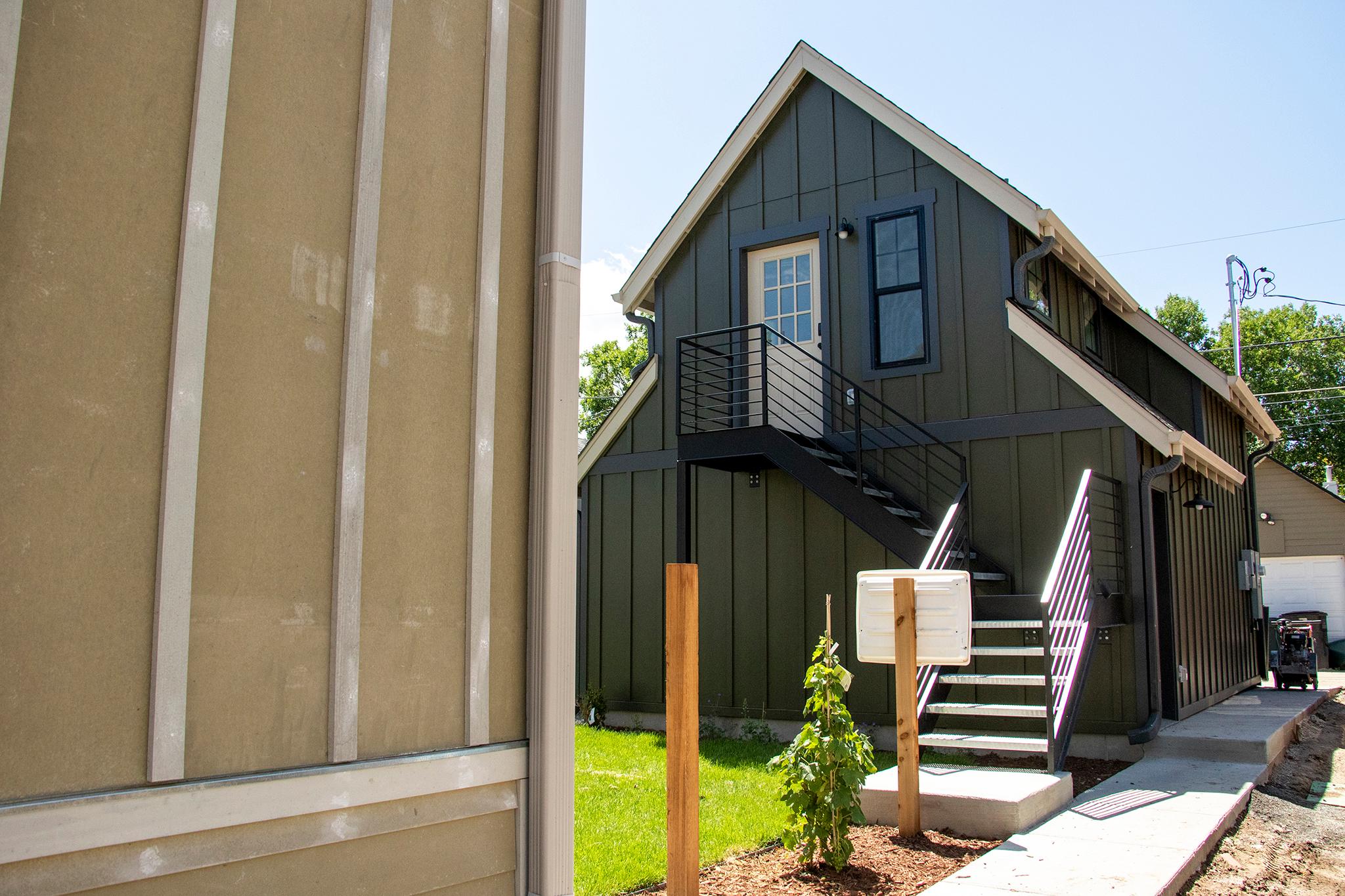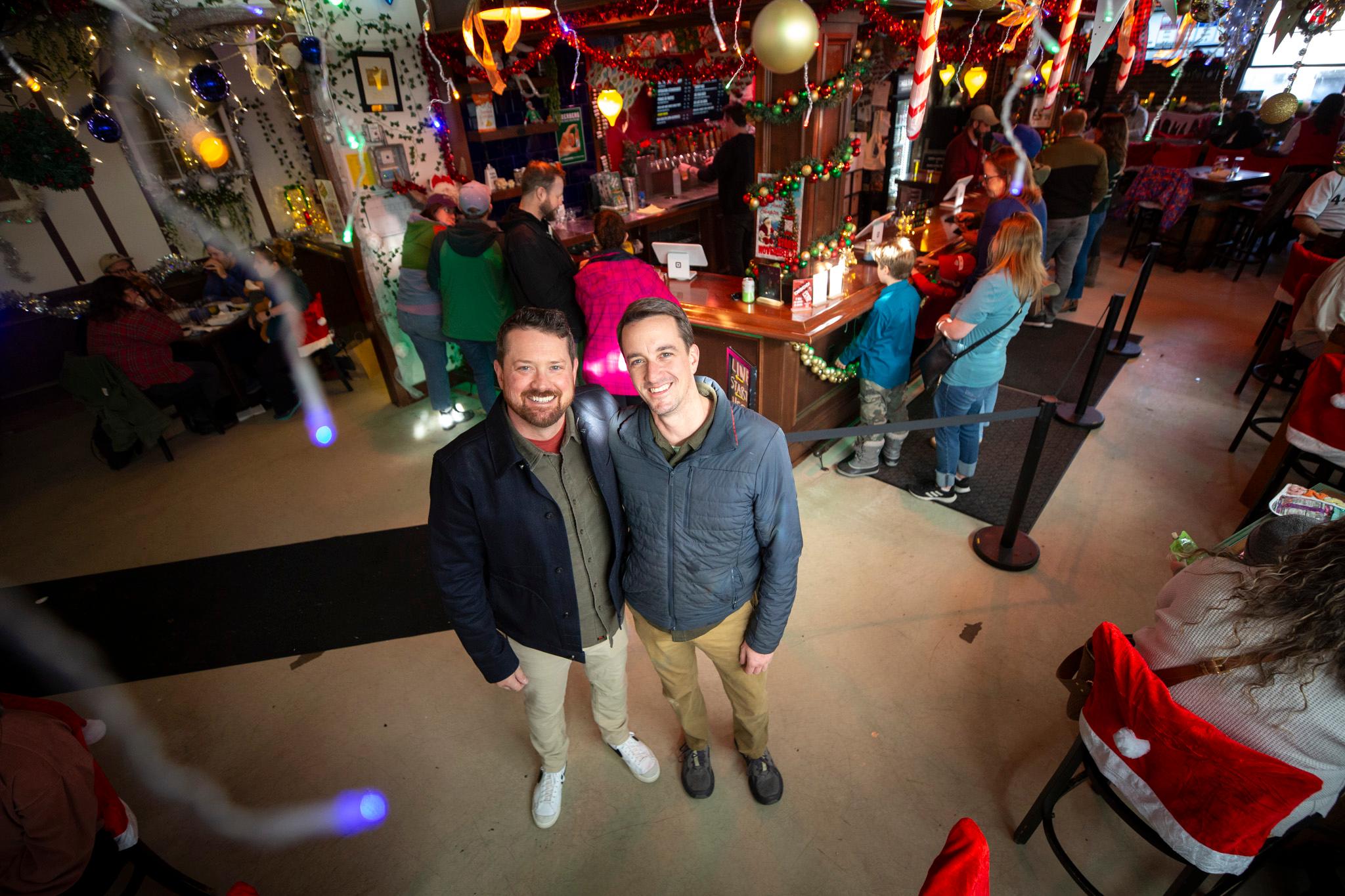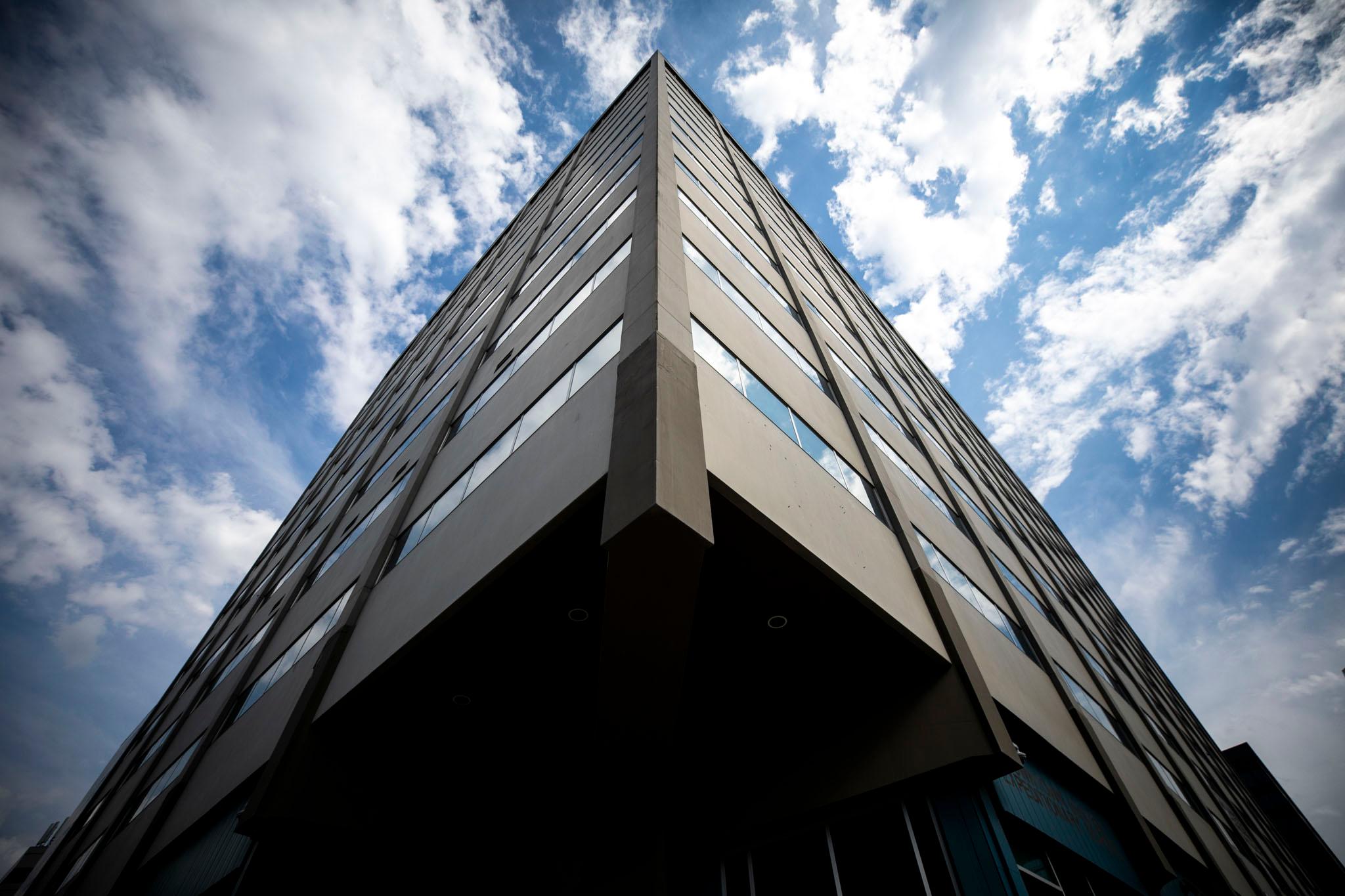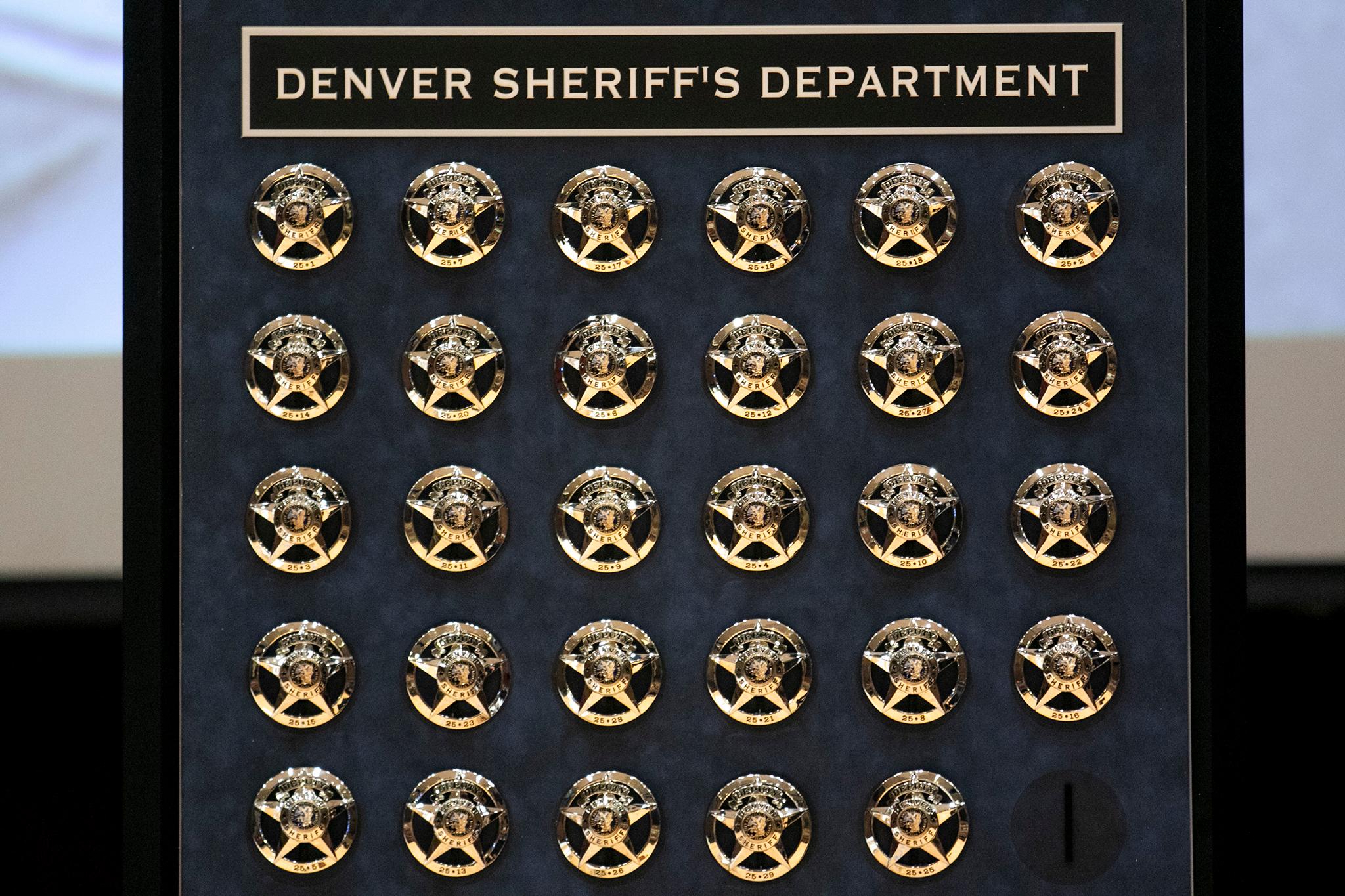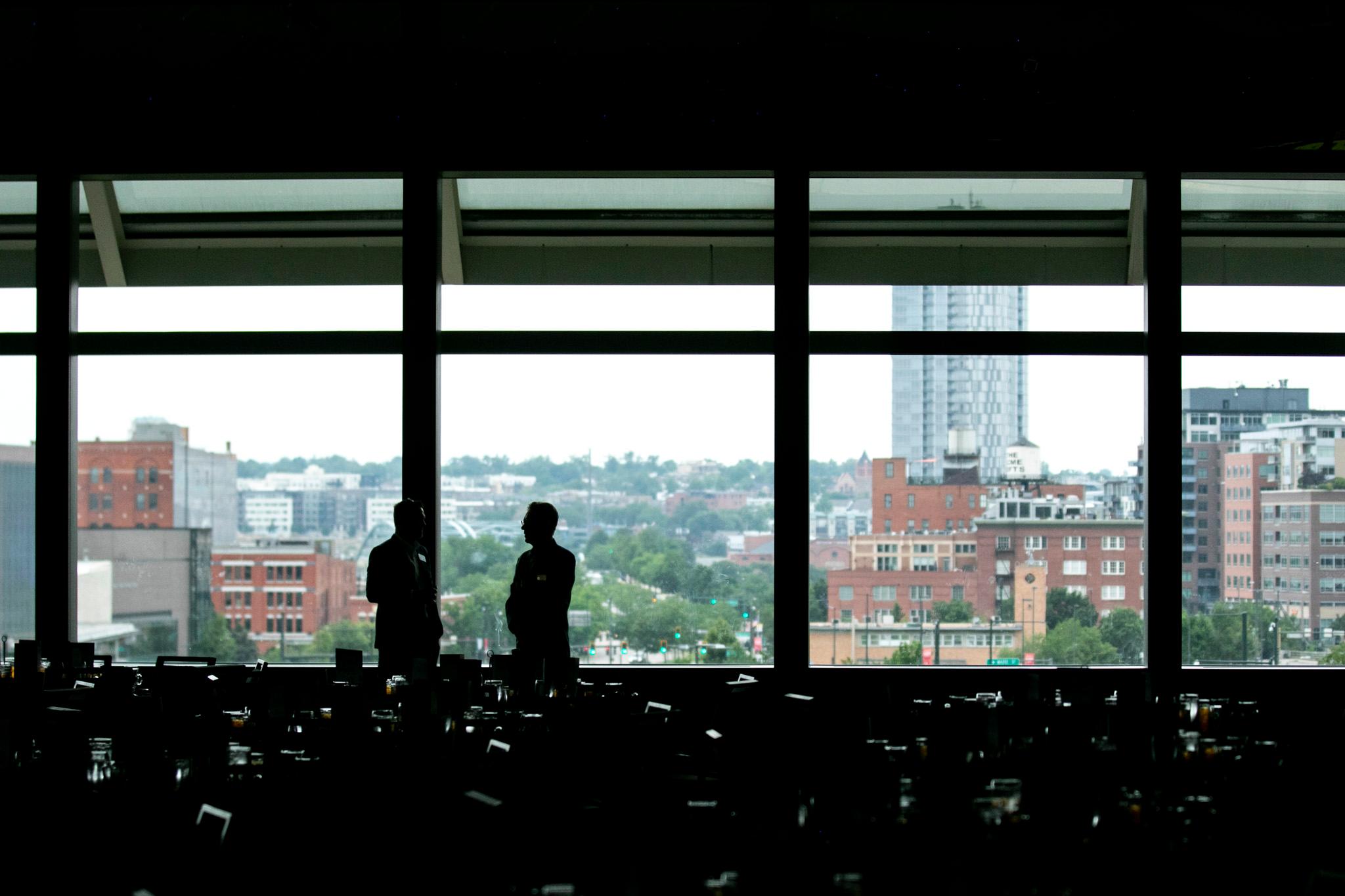Here's a bureaucratic mouthful: "Accessory dwelling unit."
Shortening the phrase to ADU doesn't necessarily clear things up. Which is why some people call the extra house on a residential lot a granny flat.
Granny flat is the right phrase for Nita Gonzales. She would like to build one behind her Chaffee Park house so she can bring her mother home from a senior housing complex. It would give her mother the independence she craves, but allow Gonzales to keep an eye on her and help when needed. Gonzales said other neighbors might be able to rent out an ADU, which could also be a basement apartment or a room or two added to the main house, allowing homeowners to earn extra cash to cover rising property taxes and other living costs.
"How do you help people that are working class or seniors that have been in their houses a long time?" Gonzales said. "This could help."
Sarah Quinlan didn't see many people the age of her own mother, with whom she lives, at a meeting about ADUs in the basement of Chaffee Community Baptist Church. Quinlan said she wondered how her mother's generation might react to the noise and disruption of construction in a neighbor's backyard. If an ADU boom were to occur, Quinlan is concerned it could radically change the community.
"I think that her quality of life would suffer," Quinlan said of her mother. "She's not going to like having all these new people around."
Both women have attended meetings about their neighborhood association's proposal that all of Chaffee Park to be rezoned to allow ADUs. The sometimes passionate conversations at those meetings could just as easily be about East Colfax Avenue's proposed bus rapid transit system -- another bureaucratic mouthful, this one referring to a dedicated lane for buses aimed at improving reliability and frequency for mass transit users. Or a bike lane on South Marion Parkway in Washington West Park. Or a new neighborhood on what had been the old Colorado Department of Transportation headquarters in Virginia Village.
Across Denver, we're grappling with concern that trying to manage development just invites unwelcome change.
In Chaffee Park, Jason Hornyak said a few homeowners came to the neighborhood association he helps lead about a year ago, asking for guidance navigating a bureaucratic process to request an individual rezoning for an ADU that can take the better part of a year to complete and includes a $1,000 fee.
"Maybe there's something bigger we could do," Hornyak remembers thinking.
At the time, Blueprint Denver, a policy document on how land should be used and transportation planned as the city grows, was under discussion and would be approved by City Council in April. It did not escape Hornyak that Blueprint Denver is positive about ADUs, recommending that the city take steps to lower zoning and other barriers to building them. The document portrays ADUs as a gentle way to add affordable housing options and as a possible "wealth-building tool for low- and moderate-income homeowners."
ADUs, while not allowed under Chaffee Park's current zoning, are legal in 25 percent of Denver.
"A city-wide approach to enable ADUs is preferred," according to Blueprint Denver. "Until a holistic approach is in place, individual rezonings to enable ADUs in all residential areas, especially where proximate to transit, are appropriate."
Rezoning an entire neighborhood in one swoop goes a bit further than Blueprint Denver suggests. It has not been tried before in the city. Hornyak sees his neighborhood as a good place to start.
"We have small houses. Big lots. No matter what people are going to tell you, there is an abundance of parking in this neighborhood," he said.
The large lots are set on a neat grid of streets bordered to the south by Interstate 70, to the north more or less by 52nd Avenue, to the west by Federal Boulevard and to the east by railroad lines just beyond Kalamath Street. The neighborhood is home to about 5,600 people.
Hornyak said the opportunity to get rental income from an ADU might help keep a family in the neighborhood who might otherwise sell to a developer who could build a McMansion on the lot. He also sees ADUs as a way to preserve one aspect of his neighborhood's character. Chaffee Park, he said, has been historically working class. That could change, with housing prices already starting to rise. ADUs could allow families already in Chaffee Park, which has high rates of homeownership, to stay by allowing them to become landlords. The ADUs they build could in turn be home to others on moderate or low incomes as Denver continues to grow.
"If we give our residents the opportunity, it will be our residents that benefit from the changes that are inevitably going to come," Hornyak said.
Hornyak and others active in the community took the idea for a neighborhood-wide rezoning to Councilwoman Amanda Sandoval, whose northwest Denver District 1 includes Chaffee Park. They have asked her to bring the proposed rezoning to City Council for a vote in what is called a legislative rezoning. If Sandoval agrees, before the request would get to the City Council floor, residents would have more opportunities to weigh in at hearing of the planning board and a City Council committee.
The request came during her second week in office, Sandoval recalled. Her first response, she said, was "let me hear what everyone else has to say."
"You're going to have to do some robust outreach," she told the ADU proponents. "I always want to make sure that I'm doing the will of the people."
Sandoval took office in July after May elections. While she is a new councilwoman, she is not new to city government. She worked on the staff of her predecessor, former Councilman Rafael Espinoza. She admits to a fascination with zoning issues, and hired onto her staff a woman trained as an urban planner, Naomi Grunditz.

Sandoval is generally receptive to ADUs, in part because she believes they could help families build wealth. But she knows ADUs are not universally embraced. She took note in particular of an ADU rezoning request from an East Colfax homeowner that came before the previous City Council in the last week of its term.
A woman who owned the house next door to the lot where the ADU was proposed wrote the city that she feared a precedent would be set that would threaten "a stable, quiet, affordable Denver neighborhood." She bristled at the idea of piecemeal changes to her neighborhood, saying it was necessary "to preserve the meaning of zoning codes."
Enough neighbors were opposed that the super-majority requirement was triggered, meaning the homeowner who wanted an ADU needed at least 10 votes in his favor. In the end, he got 13. Among the "yes" votes was one from Sandoval's predecessor, Espinoza, who said during the council debate that while ADUs can sometimes be a source of problems, "having these units is important to the health of the city."
Sandoval embraces the broader policy goals ADUs are seen as advancing. But she can understand that an extra house on the block might be a source of stress for an individual.
"We're talking about people's homes," she said. "It's where they go to feel safe."
"We understand the fear of change because of all the rapid change that northwest Denver has been going through," she said. "We are somewhat inviting change by adding accessory dwelling units. (But) we're not adding height. We're not adding commercial. We're not adding the ability to add duplexes or triplexes."
When she heard some Chaffee Park neighbors, especially older residents on fixed incomes, express fear that their own property taxes might increase because a neighbor added an ADU, Sandoval asked for a meeting with Denver's assessor. Between 2017 and 2019, the median property values the city calculated for tax purposes in Chaffee Park increased by about 20 percent, similar to the increase across Denver.
"I would hate to know that this change could result in a huge property tax increase," Sandoval said. "Even the assessor could not exactly say yes or no."
Sandoval's study of the ADU question included seeking a meeting with Renee Martinez-Stone, who has headed a project to put ADUs in reach of homeowners in western Denver neighborhoods already zoned for ADUs such as Villa Park and Barnum. Martinez-Stone has worked with partners such as Habitat for Humanity to develop designs for ADUs that are relatively cheap, in part because they involve prefabricated elements, and that could be pre-approved for construction permits. In May, Denver City Council approved a proposal to set up a $500,000 fund from which low-income westside residents can borrow to build ADUs that would be rented at below-market rates.
The cost of an ADU, which can be around $250,000, is seen as a significant barrier to their proliferation. Since 2010, when changes in the zoning code allowed ADUs in more parts of the city, Denver has not seen tremendous granny flat growth. ADU permits, according to city figures, stayed in the single digits the first few years of this decade. Permit numbers grew to 20 in 2013 and hovered there until jumping to 44 in 2016 and have generally been in the 40s every year since.
Chaffee Park residents are exploring whether Martinez-Stone's initiative could be extended to or replicated in their neighborhood.
Hornyak, of the neighborhood association, said the rezoning would relieve individual homeowners of the paperwork and $1,000 application fee burden.
"We saw this as an opportunity to make this the tiniest bit easier," he said.
ADUs are "still expensive. There's still construction costs and permitting," Hornyak said. But "there's a lot of resources out there to help us with the next steps."
The "robust outreach" Sandoval requested as part of the initial steps has included mailers for which Sandoval's office paid the cost of printing and delivering, door-to-door canvassing and an electronic survey seeking information about who in the neighborhood supports the effort. The survey, written with input from the neighborhood association, Sandoval and her urban planner Grunditz, includes a quick primer:
"ADU stands for Accessory Dwelling Unit. An ADU is small, single apartment located at the back of a property and is separate from the main house. ADU's are also commonly known as granny-flats, in-law units, casitas, carriage houses or guest houses."
The survey also has links to more information about ADUs from the city and elsewhere. By December, 386 responses to the survey had been logged. Of those, two-thirds supported a neighborhood-wide ADU rezoning, 15 percent were opposed, 22 percent said they could not decide and 11 percent said they did not care one way or another.
In addition, Sandoval led two ADU forums at which she, Grunditz and city staff answered questions about such matters as how many ADUs you can have on your lot (one), whether an ADU can take up all the available yard (no), would there be height restrictions (yes) and how big a lot you need (probably 4,500 square feet).
One Monday evening in November in the Baptist basement, the councilwoman listened intently as Quinlan, the woman who lives with her mother and is skeptical of ADUs, expressed concerns about Chaffee Park's alleys. ADU proponents see them as a plus, allowing access to possible new housing in residents' backyards. Quinlan questioned whether they could be kept clean if more people moved to the neighborhood.
"I just feel like I'm already tripping over stuff as it is," Quinlan said.
To which Sandoval responded: "What your concern is, is quality of life."
Sandoval went on to suggest that the answer was not barring ADUs, but pressuring the city and organizing neighbors to ensure alleys are tidy.
Frank Locantore, executive director of the Colfax Ave Business Improvement District, hasn't taken part in the Chaffee Park ADU discussion. But he's been in plenty of spaces like that basement.
"We can certainly have disagreements," he said, stressing the people should feel safe to express a point of view "without having their motives impugned."
He's seen facilitators bridge divides by seeking what's at the core of a concern, and then turning the conversation to solutions.
"That leadership is important," he said. But "you need to make a decision at some point."
Councilwoman Sandoval has promised to have a decision in January on whether to propose that City Council vote on rezoning Chaffee Park to allow ADUs. Until then, her door is open to constituents on both sides of the question, "making sure that I listen and honor where they're coming from, but understand that change is coming everywhere," she said.
Gonzales, who wants to build an ADU for her mother, is a longtime Chaffee Park resident. She said some of her neighbors don't want the area to change.
"I respect and understand" their concerns, she said. "We agree to disagree."
"We've been neighbors for 40 years. That's not going to change."

